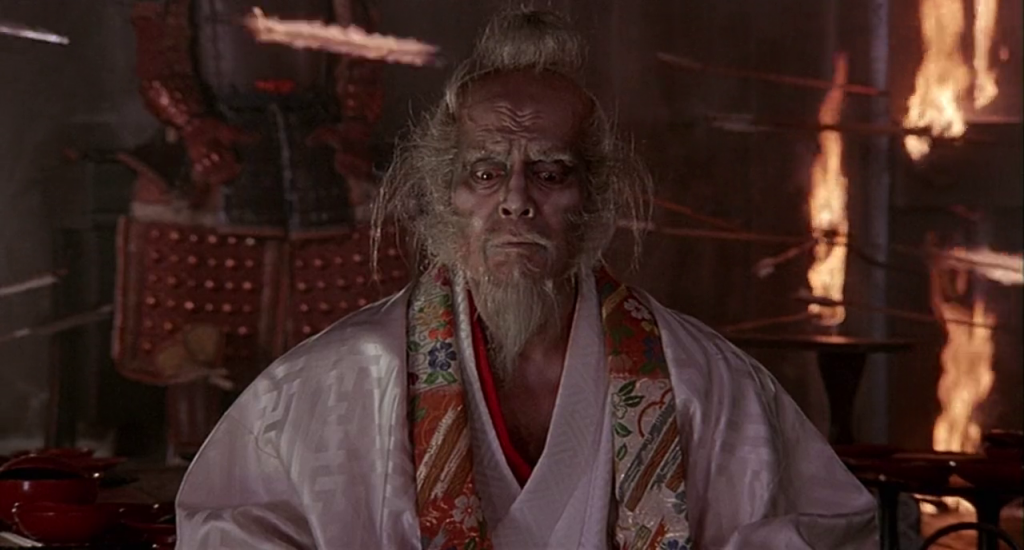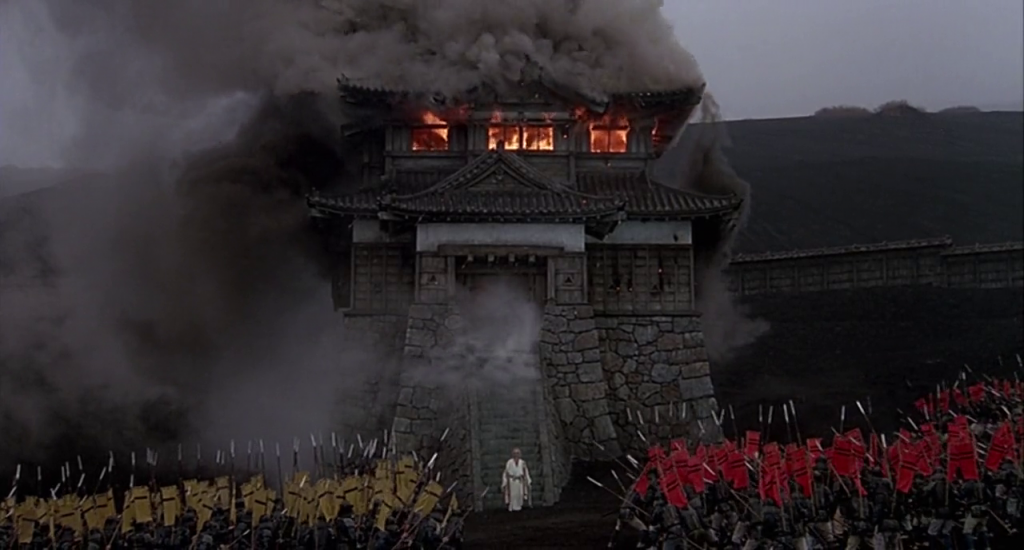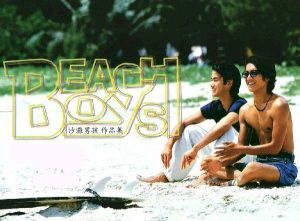The folly of pride. The arrogance of man and his best-laid plans. The deceptive and destructive allure of power. Temptation, family, revenge, and war. Ran (Akira Kurosawa) is epic in every sense of the word. In the beauty of its colours and cinematography, in its setting, in its story, in its length, and of course, in its sensational battle sequences.
Ran is the story of Lord Hidetora Ichimonji, a man who has won his kingdom through decades of violent and brutal warfare. Now seventy, Hidetora seeks to bequeath his kingdom to his three sons: Taro, Jiro and Saburo. Taro, as the eldest son, is to become the new Great Lord in the First Castle, while Jiro and Saburo are to be installed in lesser castles, in support of Taro, with Hidetora dividing his time as a guest at each of his son’s castles. Saburo speaks truthfully to his father, telling him he believes his plans to be foolish, and is banished from the kingdom for his insubordination. So, Taro is installed as new the Great Lord, Jiro takes his place in the Second Castle, and Saburo leaves the kingdom. Hidetora takes up his new place at a tower at Taro’s castle, retaining a small retinue of his own loyal men. As is to be expected from a plot based on King Lear (William Shakespeare), things soon devolve into chaos and tragedy, as Hidetora’s careful plans drift like sand through his fingers. If you’ve read or are familiar with King Lear you’ll probably be able to work out how things are going to unfold, but I won’t spoil anything further here.
I watched the Studio Canal 4K Restoration, and everything looks glorious. The colours are just outstanding, and with each brother being associated with a primary colour (Taro: Yellow, Jiro: Red, Saburo: Blue), this is an incredibly important thing to get right. The short 10-minute Blu-Ray bonus feature on the restoration itself is fairly interesting, getting a small glimpse of what work went into the restoration and offering comparisons between the original negative and the newly restored version. It’s hard to point to just one particular shot or sequence to demonstrate how gorgeous this film is, there are just too many. From the castles to the costume to the lush, wide green landscapes, it’s all a feast for the eyes.

The sheer spectacle of this film cannot be over-stated. The amount of extras, horses and costume pieces boggles the mind. Much of the stunt-work looks incredibly dangerous, and it all just adds to the scale of the proceedings. It’s no surprise that this was Akira Kurosawa’s most expensive film to produce, it was an incredible undertaking.
Toru Takemitsu’s score only adds to the sense of drama. In one spectacular sequence, all sound effects cut out completely so that only the score is heard, and the haunting music plays over scenes of silent chaos and devastation, before itself being cut off with a bang as the frantic sounds of war flood back into the mix.

Ran is a beautifully constructed, spectacular and epic piece of film-making. Kurosawa was undoubtedly a master of the craft. It is perhaps Kurosawa’s final masterpiece, in a career laden with cinematic masterworks. This may be one of his best.
10/10











